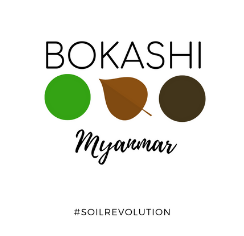Here in our bokashi yard we collect around half a ton per day from our local wet market. We’re thinking of scaling that up soon to a ton, there is no shortage of organic material freely available if you turn up with a cart at the market at the right time.
The amount of organic waste that is sent to landfill from every wet market in Myanmar is phenomenal. We would love to see an initiative like this in every ward, village, urban and rural community.
Is this something that would work in your district? We’re happy to share our best tips with you. Let us know if you would like to bring a group to our yard to learn from us so you can start up your own bokashi yard.
Later, we plan to make instruction videos about how we collect market waste and convert it to compost in the quickest and most effective way we’ve seen anywhere.
For the moment, some key points:
- Find the land and set up a compost yard reasonably close to your local market.
- You will need a shredder, an appropriate number of airtight barrels, and enough compost stacks to process the material.
- You will also need bokashi bran and CEM.
- Run correctly, the yard will not smell or attract rodents, so no cause for concern. Ours is on the main market street in a busy ward in Yangon.
- Talk to the vendors at your local market, explain what you’re doing so they understand the benefit, and find out what time would be best for you to come and collect the organic waste.
- Ask them to help by separating the organic waste from the plastic and other trash, but don’t expect too much. In our experience, you will always end up doing this yourself.
- Turn up each day at the agreed time and collect the organic material. We really shouldn’t be calling it trash, it’s such a valuable resource.
- Collect dry leaves locally. You will need the same volume of dry leaves as you have green market waste. Alternatives are rice husk and sawdust.
- Shred and ferment the market waste in the blue barrels using bokashi bran. One week fermentation is fine.
- Fill the compost stacks using the green-brown-black method described in detail here.
- After two months you will start to have a steady stream of organic compost to sell or use in a community farm.
- Spread the message and get other neighbourhoods started on processing local market waste. The key thing is to keep it out of landfill!
